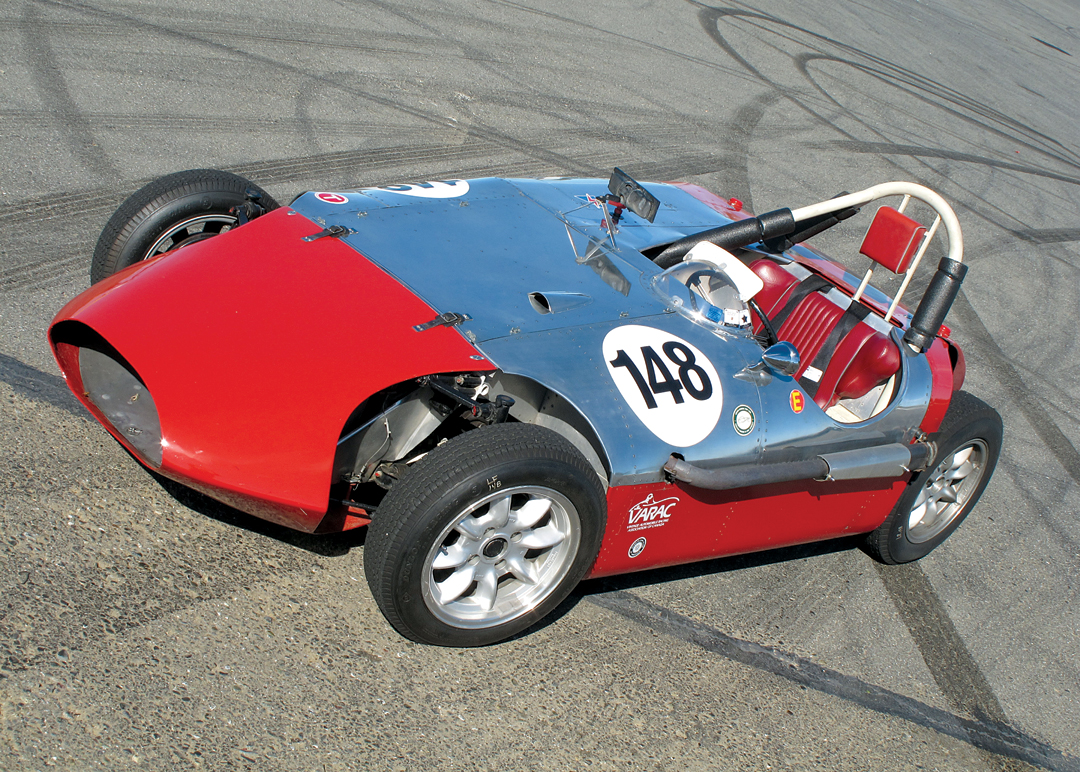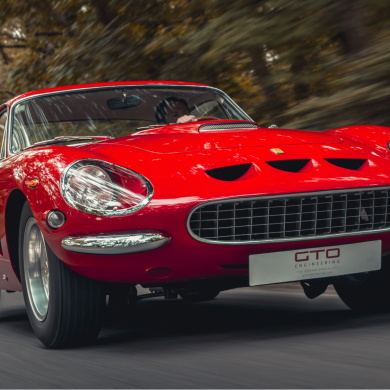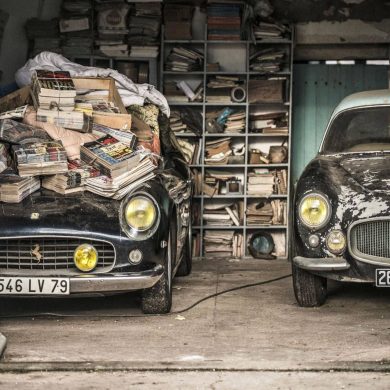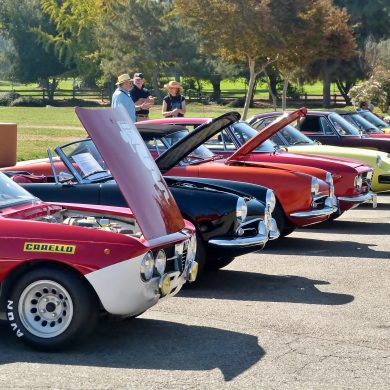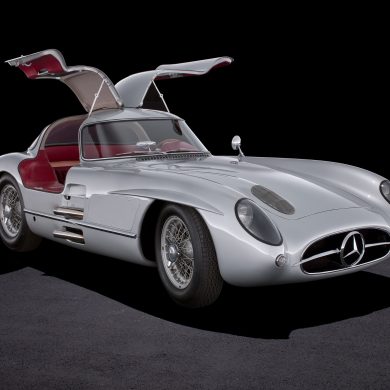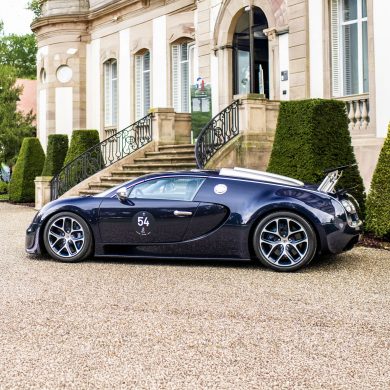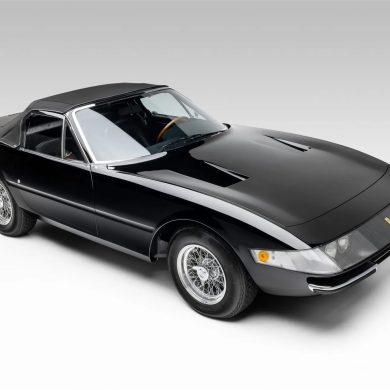For all the talk today of “level playing fields” and equal opportunities for all, it has to be understood that motor sport has never really been egalitarian. Contrary to popular belief, racing runs not on gasoline, but on money. From its humble beginnings at the turn of the 20 century, the combined forces of competition and advancing technology have always driven the costs of motor racing ever higher.
Yet, as early as the 1930s, racers and race organizers began to develop ways of fueling competition without fueling costs. Just before WWII, several groups of British enthusiasts began organizing competitions for inexpensive specials built around the relatively affordable Austin Seven passenger car. After hostilities ended, these Austin Seven enthusiasts returned to a Britain ravaged—both industrially and financially—by war. Looking again for an affordable way to compete, in 1946, one faction known as CAPA was reformed as the 500 Club, which became devoted to the construction and competition of small, single-seater racecars powered by 500-cc motorcycle engines, which were more affordable and readily available in postwar Britain. Those enthusiasts more interested in two-seater specials built around the 750-cc Austin Seven engine and chassis were known as the 750 Club and, in 1949, they began organizing races for these almost exclusively home-built specials. In fact, some of motor racing’s most legendary constructors, men with names like Colin Chapman and Eric Broadley, cut their car- building-teeth in the 750 Club.
Oh, Canada
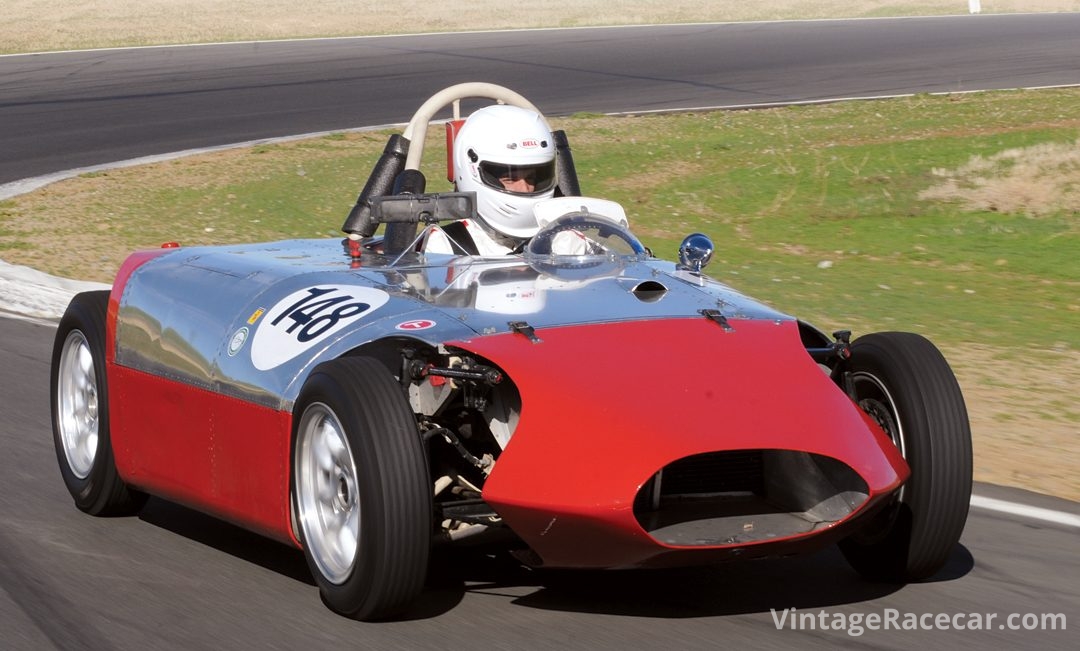
Britain was not unique in having an abundance of racing enthusiasts with a dearth of funds. From Australia to Europe to North America, men returned from the war eager to get back to their beloved pastime, but without many viable options. If one were lucky, and had means, you could buy one of the prewar racecars carefully hidden away during the war, but even a ten- year-old Maserati or ERA was way out of the reach of the Average Joe. As the postwar ’40s became the cold war ’50s, little changed. If you wanted to race a production car, you could buy an MG or maybe a more expensive Porsche, but if you wanted to race a purpose-built racecar, you were out of luck—unless of course you were independently wealthy. Where was the racing for the tinkerer, the “shade tree mechanic”? Now, if you’re like me, it is easy to make the historical mistake of assuming that it was Count Johnny Lurani, who came to the rescue. Most readers of this magazine will be well familiar with the fact that in the late ’50s, Lurani hatched a plan to create a racing class for purpose-built single-seaters that could only be built from humble, affordable road-car components. So, would it surprise you to learn that not only did he not originate the concept, but that it came from two guys in Canada, three years prior? Yeah, me too!
In the summer of 1955, a pair of Canadian racers by the names of Ian Sword and Peter Dillnutt got together for an evening of beer and bench racing near Toronto. Over the course of the evening the two CASC (Canadian Auto Sport Clubs) members mutually lamented the lack of racing options in Canada for the hobbyist who wanted to compete affordably with a purpose-built car of his own construction. Over the course of that evening, and more to follow, the duo laid down the groundwork for a new category that they would eventually call “Canada Class.” The initial rules, codified on August 20, 1955, were for a single-seater racing car of which the motor and major components were to be sourced from either domestic or imported cars or trucks that retailed for no more than CDN$2,000. Essentially, the list of possible donor cars at the time included the Morris Minor, Ford Anglia and Prefect, VW, Austin A30 and A40, Renault and Standard 8. Engines could be up to 750-cc in overhead cam configuration, up to 850-cc in overhead valve configuration, or up to 1200-cc in side-valve or flathead configuration. Interestingly, fuel choice was left open, including alcohol mixtures, with the exclusion of nitromethane additives. Gearboxes, suspension, brakes, rear axles, and wheels were also open provided that they were sourced from one of the qualifying donor car models, though they need not be from the same brand or model as the other components.
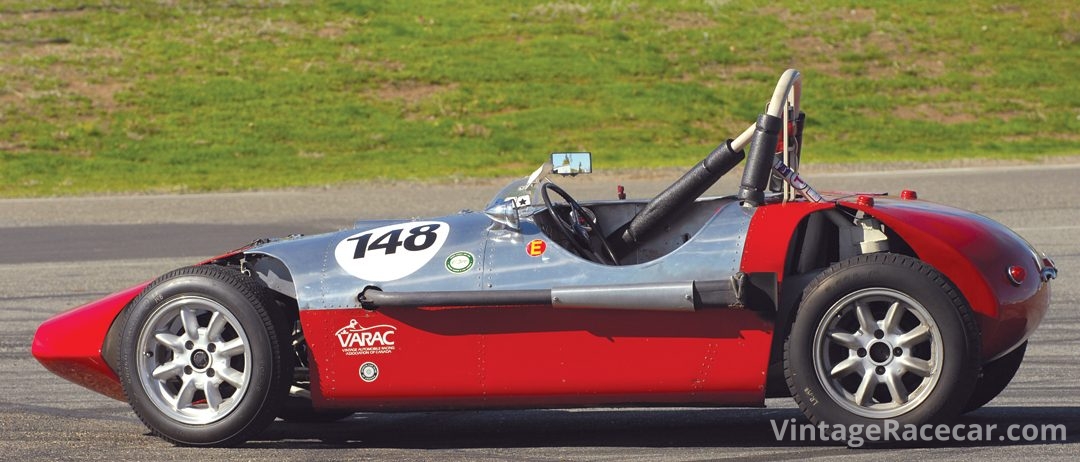
While the core components limited the scope—and cost—of these new Canada Class racecars, it was in the design of the body and chassis, where the budding constructor was able to enjoy free reign. The only constraints on the chassis construction was that the track could be no less than 45”, the wheelbase not less than 84”, and in the words of its creators that “The chassis will be subject to rigid technical inspection with particular regard to welding.” In essence, you could build what you like, but the organizers weren’t going to trust your welding! Finally, in order to level the playing field further, each car was required to race at a minimum weight of 750-lbs.
Canada Class is Born
While the rules were first submitted for consideration in late August 1955, it wasn’t until early in 1956 that the class was officially adopted by the CASC. As a result, this didn’t leave much time for interested participants to build cars for the inaugural 1956 season, which commenced that June. Due to the short lead time, only about a half a dozen cars participated in that first season. However, the cream of the crop was the Autosport Special, built by Jack Wheeler and Bob Hanna of Autosport Ltd., in Cooksville, Ontario. The Autosport Special featured a 60-kb tubular space frame built around an English Buckler Mk XV frame, Within this chassis, the pair placed a Morris Minor engine that had received an Alta OHV conversion head and lightened pistons and rods. In the hands of Hanna, the car won every race that first season and claimed the inaugural Canada Class championship. In fact the combination of Hanna and the Autosport Special were so potent that they won the championship again in 1957 and 1958. Though Hanna won the championship three years in a row, it was by no means a cakewalk. Close competition came from a number of sources including a car known as the McCaw Special.
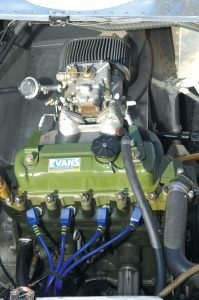
Photo: Jim Williams
Jim McCaw, a body-shop owner by trade, was part of an Ontario group of enthusiasts known as Scuderia Hysteria. Scuderia Hysteria was, according to team member Alan Slater, “a lot of fun. Scuderia Hysteria was our response to the richer, more successful outfits.” Members of the Scuderia, enjoyed building both road- and racecars, so when the new Canada Class was announced, McCaw and friends found a project they could really sink their teeth into. For McCaw’s first Canada Class car, Slater, a mechanical engineer, drew up the plans for a spaceframe chassis that would accept the mechanicals from a Standard 8. In just seven weeks of “after work” time, McCaw and friends finished the car in time for the August 4th race at Harewood. Showing its true sports car nature, McCaw drove the Special 250 miles from his home in Kingston, Ontario, to the track, finished 2nd in the race to Hanna and the Autosport Special, and then drove the 250 miles back home! A true testament to the engineering excellence of his work and Slater’s design.
Enter the V.A.Y.
In addition to designing the frame for McCaw, Slater was himself racing a 1952 Ford Consul in various races, though he now says, “with a great lack of success.” During the early part of 1957, Slater decided to design and build his own Canada Class car. Slater penned a spaceframe that, unlike the McCaw Special, would receive the same Morris Minor package, with Alta OHV head, as the then-dominant Autosport Special. Though he originally envisioned the car being constructed with square tubing, for practical and financial reasons, Slater ultimately decided to weld his frame up with less expensive round tubing. However, once the frame was complete, Slater lost interest in the project and subsequently sold it to fellow Hysteria team member Vic Yachuk of Cataraqui, Ontario. According to Slater, “I think I must have started the V.A.Y. in ’56 or ’57. I sold it to Vic when I had to spend real money to buy the parts and the Alta head, and I realized then that I was not keen enough to follow through. I know now that the challenge of the design is more attractive to me, as later in life I have designed a number of successful catamarans, without ever being much of a sailor.”
Using the stock 918-cc Morris Minor flathead engine as his starting point, Yachuk boosted the compression from 6.5:1 to 9.5:1, installed lightened pistons and rods, and converted the engine to overhead valve configuration with an Alta head. The net results took the stock 27.5-hp, 4,400-rpm engine and turned it into a 54-hp, 6,200-rpm race motor. While this may not sound like much, keep in mind that the car only had to weigh 750-lbs when finished.
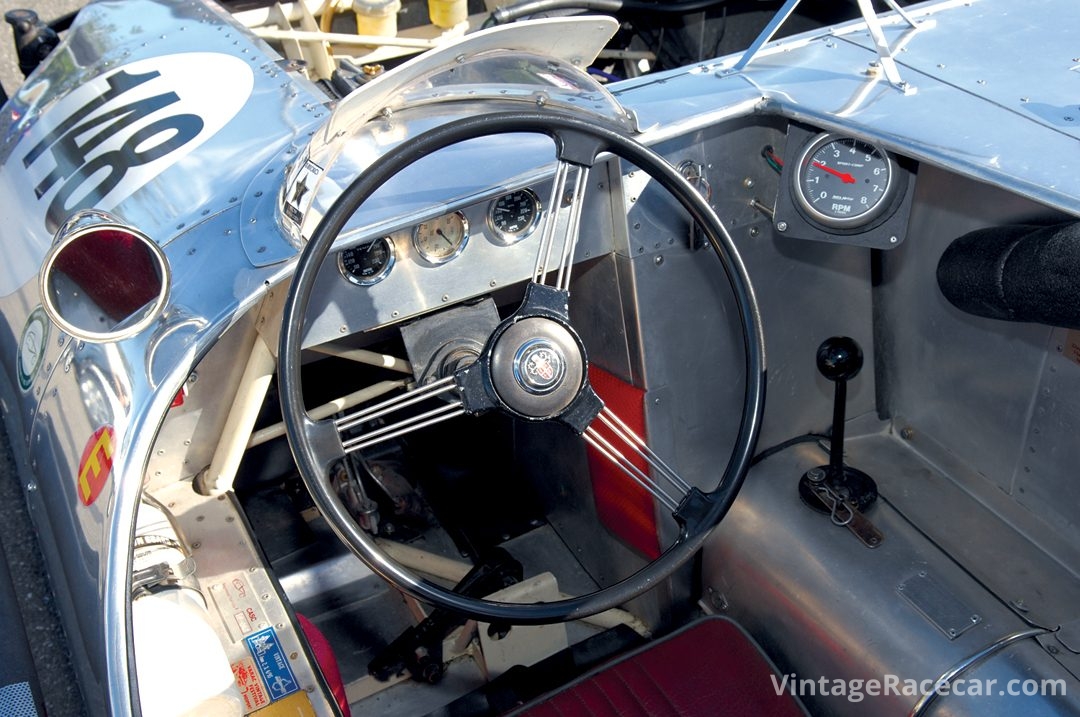
With the help of McCaw, the new car—now known as the V.A.Y. Special (V.A.Y. being Yachuk’s initials)—was clothed in a fairly simple aluminum body that by design incorporated no compound curves in its construction. This design, while aesthetically not to everyone’s taste, made the V.A.Y. easy and economical to construct and more importantly, easy to repair. However, whatever the V.A.Y. may have lacked in styling, it more than made up for in performance.
Yachuk and the V.A.Y. made their debut at the June 18, 1958, races at Harewood, where Yachuk finished a promising 3rd. Yachuk then backed up this first outing with several class victories including a win at Harewood on September 12th and another at the St. Eugene airport course on September 20th to wrestle the Canada Class championship away from Bob Hanna and the Autosport Special.
Another Year, Another Championship
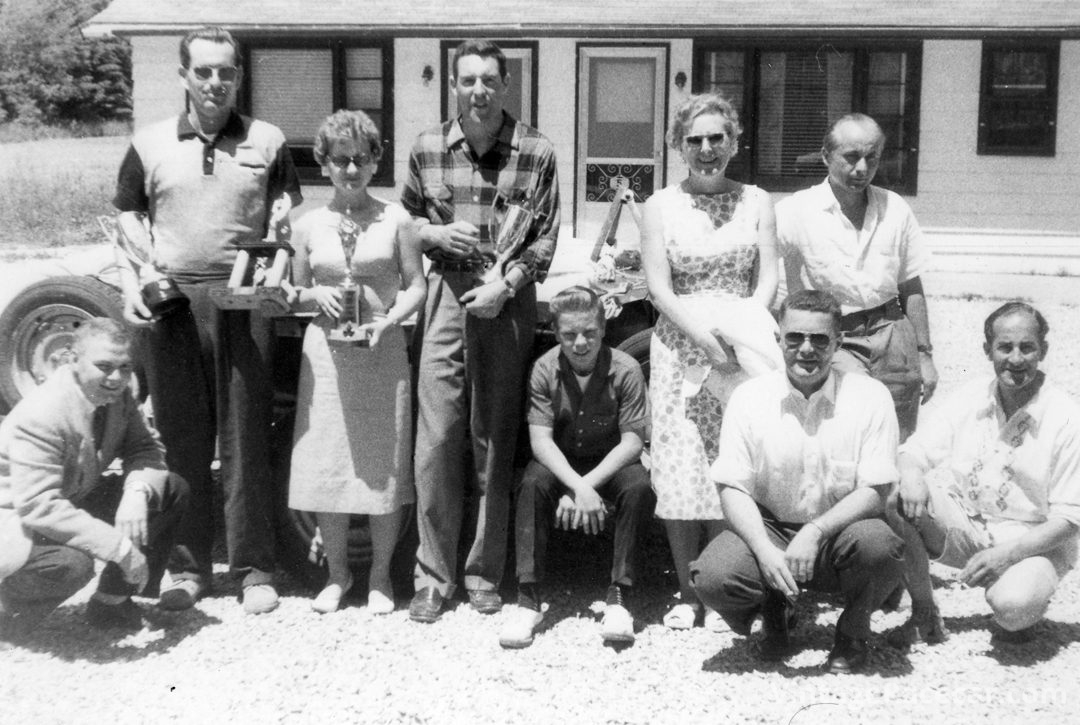
The 1959 CASC road-racing season kicked off on May 30, with the Green Acre Trophy Races, in which Yachuck and the V.A.Y. competed, but no record of results is known to exist. Subsequently, Yachuk and the V.A.Y. turned up on June 13–14 at the Connor Airfield Races in St. Eugene where he not only won the Canada Class division, but also the under-1100-cc category as well. From there Yachuk claimed victory at Green Acres on July 4th, then took another win at Edenvale on July 10 before heading back to Harewood on July 25th, for the big Sundown Grand Prix 6-Hour race. For the 6-Hour Enduro, Yachuk teamed up with Scuderia Hysteria cohort Bill McDonald as his co-driver. The duo had an eventful race that included everything from a disconnected clutch-linkage pin to a fuel starvation problem caused by a series of pirouettes through the chicane! Yet despite all this, the V.A.Y. ended up leading the Canada Class standings with just a few laps to go when the Scuderia Hysteria pit crew realized that the V.A.Y. didn’t have enough fuel to finish the last couple of laps. For two agonizingly long laps, the crew desperately tried to signal Yachuk, who was driving the final stint, to come in for fuel. Each lap, however, he ignored their pleadings. As the checkered flag came out, the V.A.Y. rolled out of the final turn, headed down the front straight and then silently coasted across the line as the Canada class winner…albeit a very dry one! With the Sundown victory, Yachuk racked up the V.A.Y.’s 14th Canada Class win, in only a season and a half of competition. Yachuk would go on to an uncharacteristic 2nd-place finish at Harewood during the 9th Annual Sports Car Trophy Races on August 14–15, but would come back with a win at Edenvale on September 11th to claim his second Canada Class Championship. Topping off his dominating season, Yachuk was also awarded the Canadian Racing Drivers Association’s 1959 award for Outstanding Driving in the Canada Class.
Moving On
For 1960, the Canada Class broadened its rules to include Formula Juniors, which to some extent marked the eventual demise of the “homebuilt” racecars like the V.A.Y. With the handwriting on the wall, Yachuk switched to a Sadler Formula Junior for the 1960 season, and so sold the V.A.Y. on to Jimmy Dobbs of Oshawa. While the “homebuilt specials” like the V.A.Y. were still eligible to compete, and did so even into 1965, they were really no match for the Stanguellinis and Elvas that were now appearing on the Canadian scene. In many ways, their day had quickly come and gone.
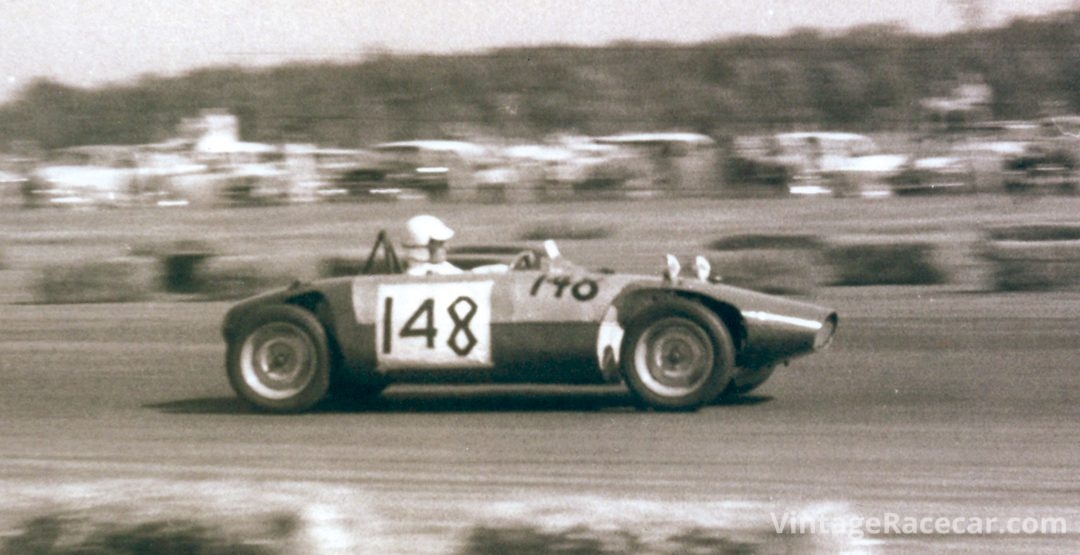
With that said, Dobbs ran the V.A.Y. for the next couple of years in a variety of road race and hill climb events. Sometime between 1962 and 1963, the ownership trail of the V.A.Y. briefly goes cold. However, in 1964, a racer by the name of Gary Magwood spotted a racecar sitting covered in snow, behind a gas station in Toronto’s West End. Magwood says he bought the car, now labeled the “Fabbri Special” from a kid who worked at the gas station. Magwood struggled with the car throughout the 1964 season. According to him, “The engine never seemed to last more than a few laps, and I managed to deplete the entire Canadian inventory for Alta spares, in short order!”
As a result, for the 1965 season, Magwood completely stripped and rebuilt the car not only with new bodywork, but also by replacing the entire drivetrain. Instead of the difficult Morris Minor/Alta unit, Magwood opted for a BMC A-series engine and transmission from a Sprite. With the new engine and, as he puts it, “Flying Shingle”-like body design, Magwood rechristened the car the BS&T Special. Magwood campaigned the car throughout 1965—including finishing the same Sundown 6-Hour race that Yachuk had won in ’59, only now held at Mosport—but, after a year or so more, sold the car to Bill Bovenizer.
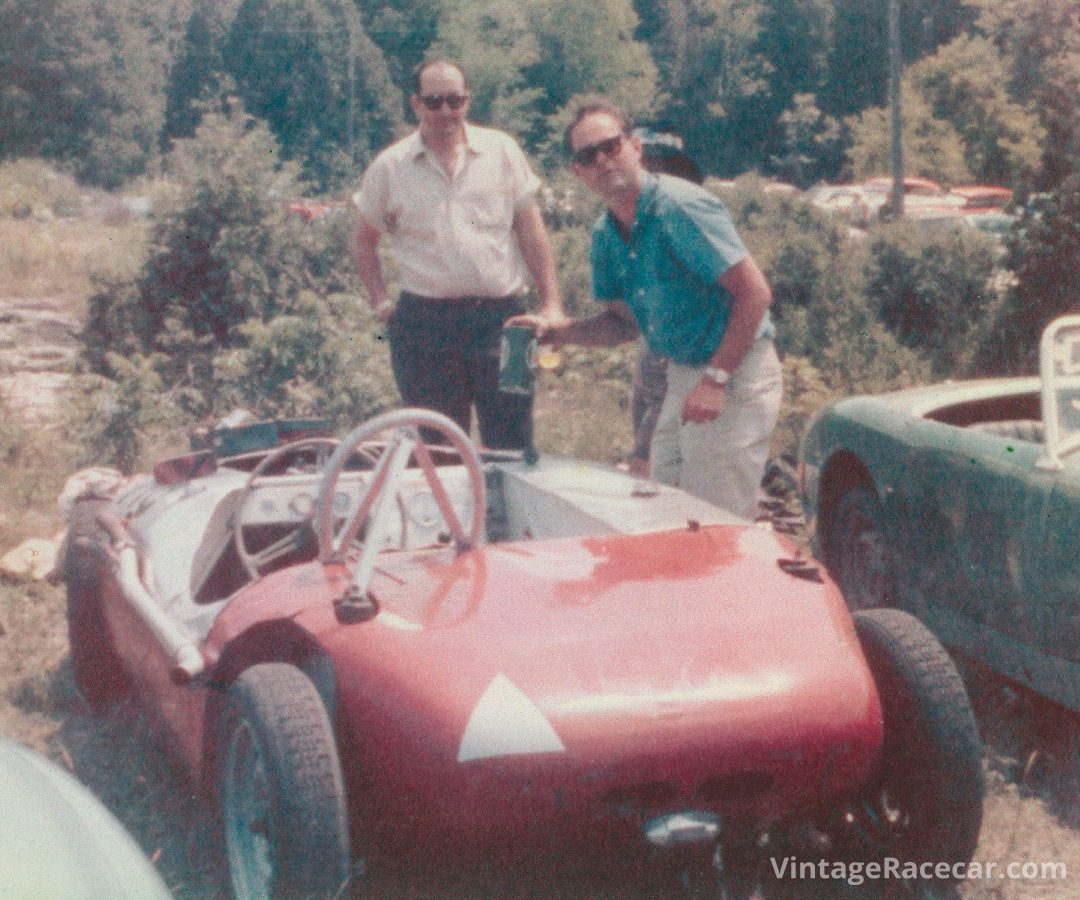
Bovenizer owned the car for some years before passing it along to Larry Langdon, who eventually sold it in the early ’80s to General Lew MacKenzie. By this time the car had been reconfigured so many times (since Yachuk owned it) that no one realized that it was in fact the V.A.Y. MacKenzie ran the car in Canadian historic races until the mid-’80s when he sold it to Stephen Burnett. Somewhere over the next few years, Burnett sold the car to an undisclosed buyer who brutally chopped up the frame in a failed effort to modify or customize the now old and tired racecar. After a very short period of time, Burnett managed to buy back the badly bodged car as a project. He stored what was left of the frame and all the components on a shelf above the men’s room at a friend’s factory. It was from this ignominious location that VARAC stalwart Mike Rosen was to find the car.
Resurrecting the V.A.Y.
Rosen bought the remains of the V.A.Y. as an “unknown” sports racer, of reputedly ’60s origin. Ironically, as Rosen began to research the mystery car, some people suggested that it was the Autosport Special, mistaking its frame for the Buckler-based one in the Autosport. However, much investigation, and ultimately some defining details gleaned from the car’s original roll bar, revealed that it could be nothing but the V.A.Y. With the car’s original identity revealed, Rosen then commenced a painstaking two-year restoration to set the car back to its original V.A.Y. configuration, albeit with the later BMC A-series powertrain. Rosen campaigned the restored V.A.Y. for over 14 seasons with VARAC before deciding to sell the car in 2008. It was ultimately bought by its current owner, Steve Kupferman of Northern California.
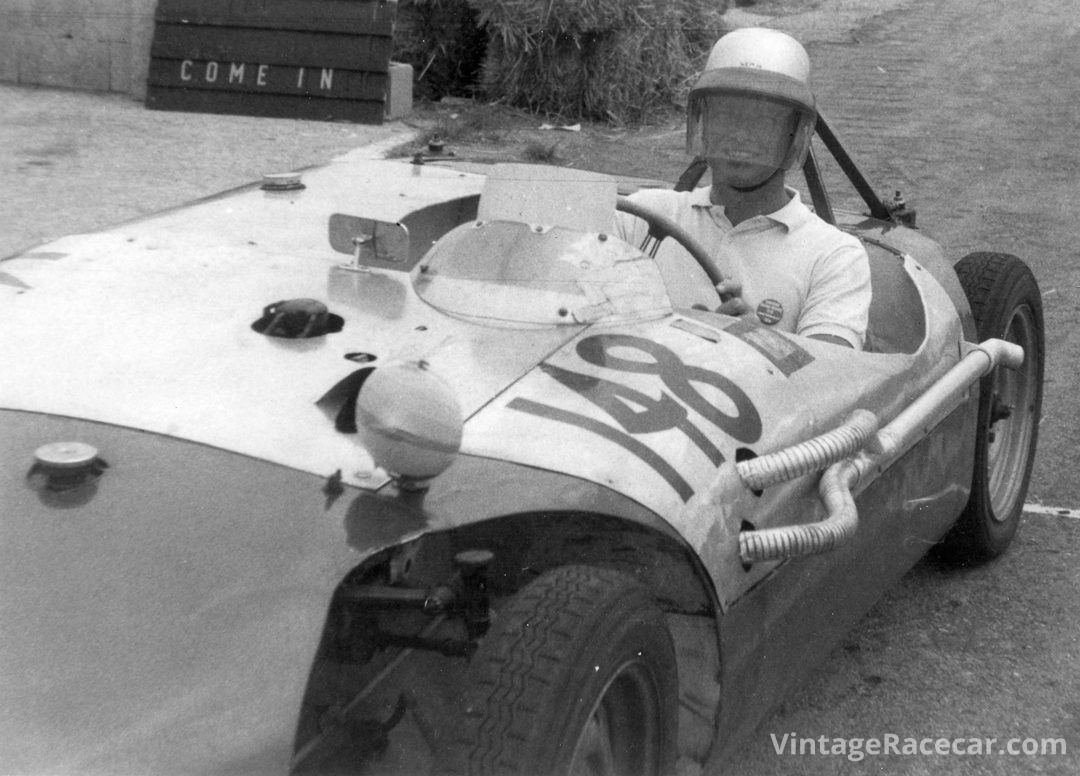
A Date with the V.A.Y.
I met the V.A.Y.’s current owner Kupferman at Northern California’s Thunderhill Raceway, about an hour north of the state capital Sacramento. Kupferman had brought the V.A.Y. to CSRG’s last race of the season, and the club was very generous in offering me the use of the track during the lunch break on Sunday. It was a gorgeous, sunny, late fall day as I pulled on my Nomex and got ready for my time with the V.A.Y.
Looking over the car in the paddock, I was struck again by the V.A.Y.’s quirky…cuteness? The V.A.Y., to me, is like the automotive equivalent of the duckbilled platypus—odd looking, in an endearing sort of way. The combination of several seemingly disparate features—like that unique snout, open wheels and comparatively broad, round mid-section—makes the overall package somehow appealing to me in that “Please Mom, can we take the one-eyed dog home?” sort of way.
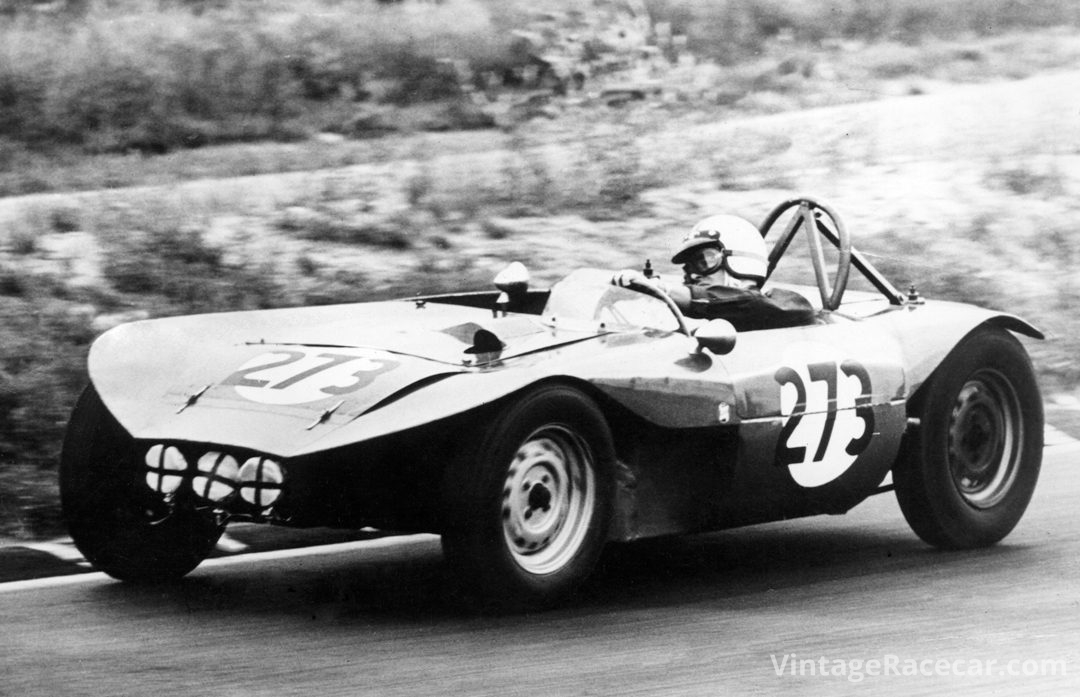
Photo: Magwood Collection
Being an inherently small car, with a small engine, I’m a little leery as I climb over the left sill and stand on the driver’s seat. At 6-feet tall, I’m anticipating another round of “How can I cram my legs and body into an uncomfortably small space?” Yet, as I slide down into the seat, I’m shocked to learn that I have ample room for my legs. The driving position is almost bolt upright, but the inside of the cockpit is remarkably roomy for so small a car, with plenty of space for “elbows up” driving. And that’s a good thing, because with the large, ’50s-era, banjo-style steering wheel mounted at about a 40-degree-angle—like a tractor’s—I’m going to need the elbow room!
The layout of the cockpit is minimalist in the extreme. Straight ahead, there are three small gauges for oil pressure, oil temperature, and water temperature, with the single ignition key/switch to the right. Mounted off to the extreme right of the cowl, almost as an afterthought, is a modern electronic tachometer. Below the tach, on the right-hand side, is the gearshift knob that Kupferman informs me will take some getting used to. “Because it has a Morris Minor transmission with the remote lever removed, the shift pattern is backward,” he tells me. “First is up and to the right, then back for second, then up and to the left for third, and straight back for fourth.” As Steve tells me this, I realize, I’m really, really going to have to concentrate if I’m going to avoid making a very ugly mistake, i.e., a fast upshift to fourth that is in reality second!
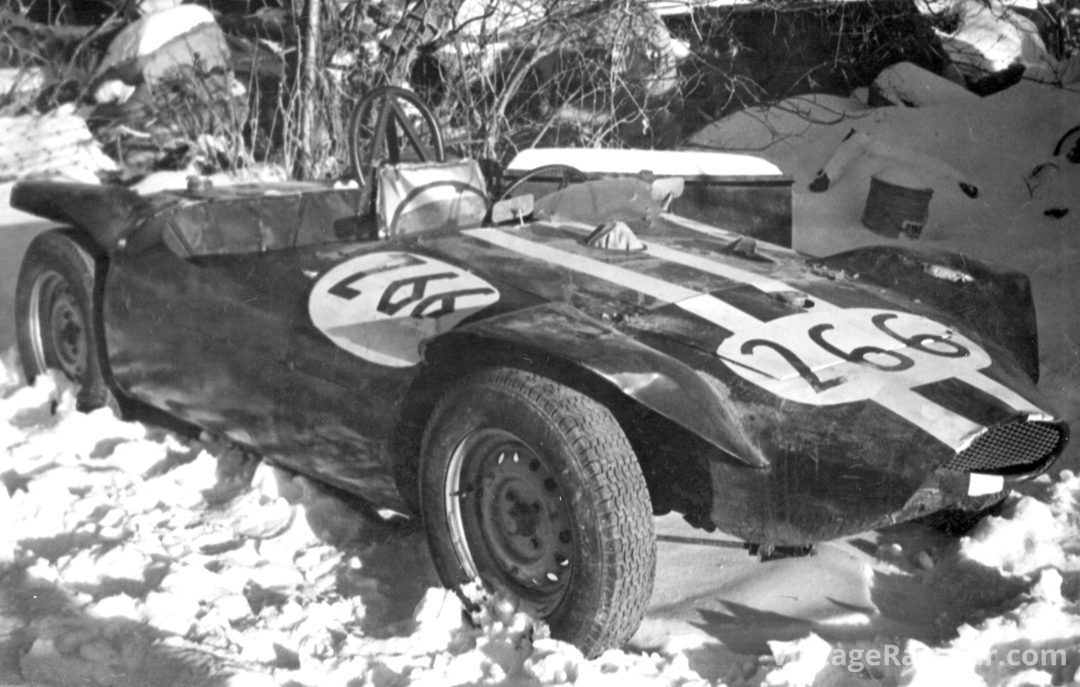
Photo: Magwood Collection
With all the preliminaries out of the way, I strap in, pull on my helmet, and reach over and give the key a turn. The 948-cc BMC motor shrieks to life…and I mean shrieks! As I am suiting up, Kupferman asks me if I have earplugs. “Here,” he says as he hands me a pair, “the exhaust system ends right behind your ear…you’re going to need these.” He wasn’t kidding.
After dipping the clutch, consciously pushing the shifter up and to the right, I give the V.A.Y. a little juice and gently pull out into the pit lane. The first lap or two are spent behind the camera car getting some pictures, which buys me some time to get used to the car’s overall handling and feel. Surprisingly, I feel almost instantly at one with the V.A.Y. The car feels small, compact, light, and nimble. At first blush, the handling feels tight and razor-sharp. Even the tiny little 948-cc engine, which has less total displacement than a large Coca-Cola bottle, feels zippy and quite capable of pushing the little car along at considerable speed. With our photographic work done, and my right foot itching for a workout, I downshift as we exit the last turn onto the front straight, and with a shrill wail emanating over my left shoulder, I whiz by our camera car and catch a fleeting glimpse of a worried- looking Kupferman behind the wheel! No one likes to see their little girl run off with a strange man.
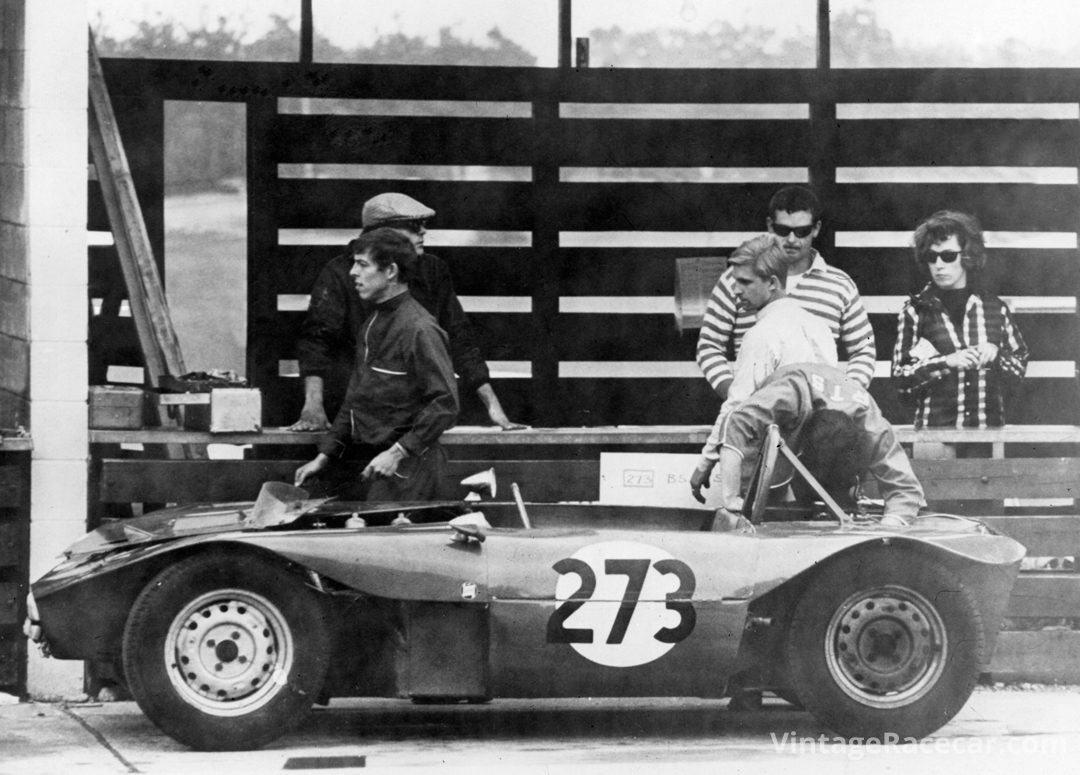
Photo: Magwood Collection
Thunderhill’s long front straight gives the V.A.Y. ample opportunity to stretch its legs in top gear, before I need to gently caress the 4-wheel Morris Minor drum brakes to set up for the long left sweeper that is Turn 1. Entering Turn 1 at relatively high speed the V.A.Y. is totally precise and predictable as it gently slides out toward the exit. After a brief stint back on the gas in fourth, it’s harder on the brakes and a careful downshift to third, before the long 180-degree, left-hand Turn 2. Again, I’m impressed with the formula car-like handling as the slightest steering corrections, immediately translate into predictable changes in the car’s position and attitude.
I get to hear the little A-series mill scream in third for a few seconds before I lift for Turn 3, set the car up, and then accelerate up the short, steep hill to the totally blind Turn 4 at the top. As I reach the top of the hill, several things happen all at the same time: (1) I can’t see where the hell the track goes! (2) Despite not knowing where the track goes, I’m pretty sure I need to slow down…a lot!…and get back down to second gear. (3) Just as I think I’m in deep dukey, I spot the apex far off to the right, so I saw the wheel over (elbows up!) and get back on the gas to swoop down the other side. Hmm, that was fun…but a little hairy.
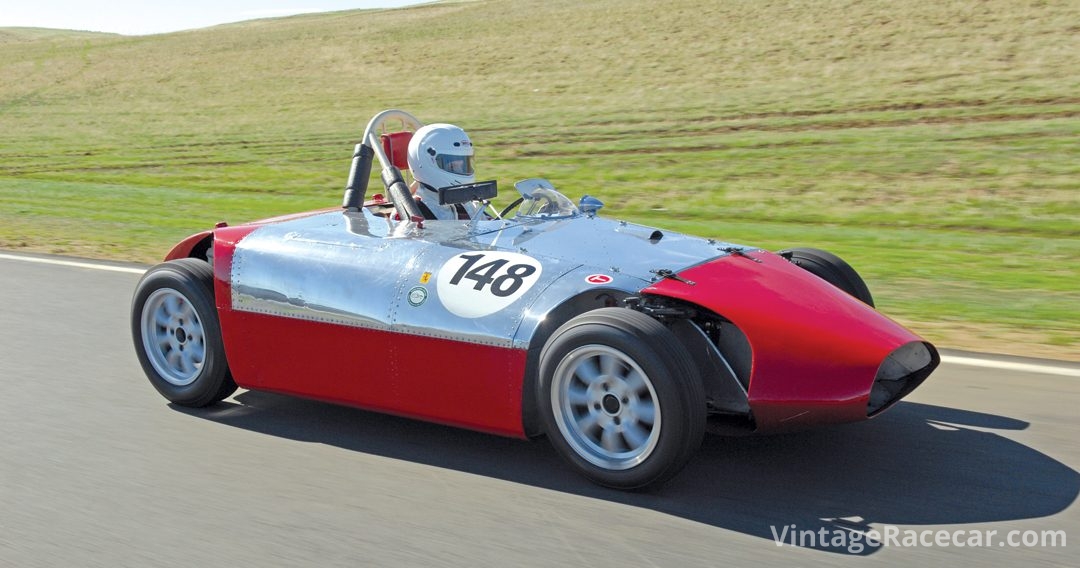
The next five turns are a lovely combination of quick sweeping turns that let me hurl the V.A.Y. into a series of fast, left- hand curves in third and fourth gear. With each turn, the V.A.Y. points into and out of the turn with such well-mannered predictability that my confidence grows with each successive turn. In fact, my confidence grows so much that on the entry into to Turn 10, I momentarily let my guard down. As I quickly go to downshift from fourth to third, I get lost in the shift pattern. Crap! Where was I? Is it forward and over or back and down? Fear of grenading little springs and ball bearings all across the track restores my focus and I eventually select the correct gear, having sacrificed a fair bit of speed in the process, but not any gear teeth. Despite this brief diversion, the V.A.Y. snaps right back to attention, and by the next turn we’re both back in the groove.
With each successive lap the V.A.Y. instills nothing but confidence…and undiluted fun. The car is quite frankly a hoot to drive. By the fourth lap, I find myself wanting to push the V.A.Y. even harder—wanting to balance it deftly in those long, controlled slides, on those skinny little tires! Sadly though, whenever I start hearing those voices “to push it just a little farther” is when I know it’s time to come in. As much as I don’t want to, I duck back down the pit lane and burble my way back to the paddock. As I shut the engine off, and the ringing in my ears begins, I can’t help but marvel at what a delightful little car was built by a group of amateur constructors, in the frigid Canadian north. Canada class, indeed.
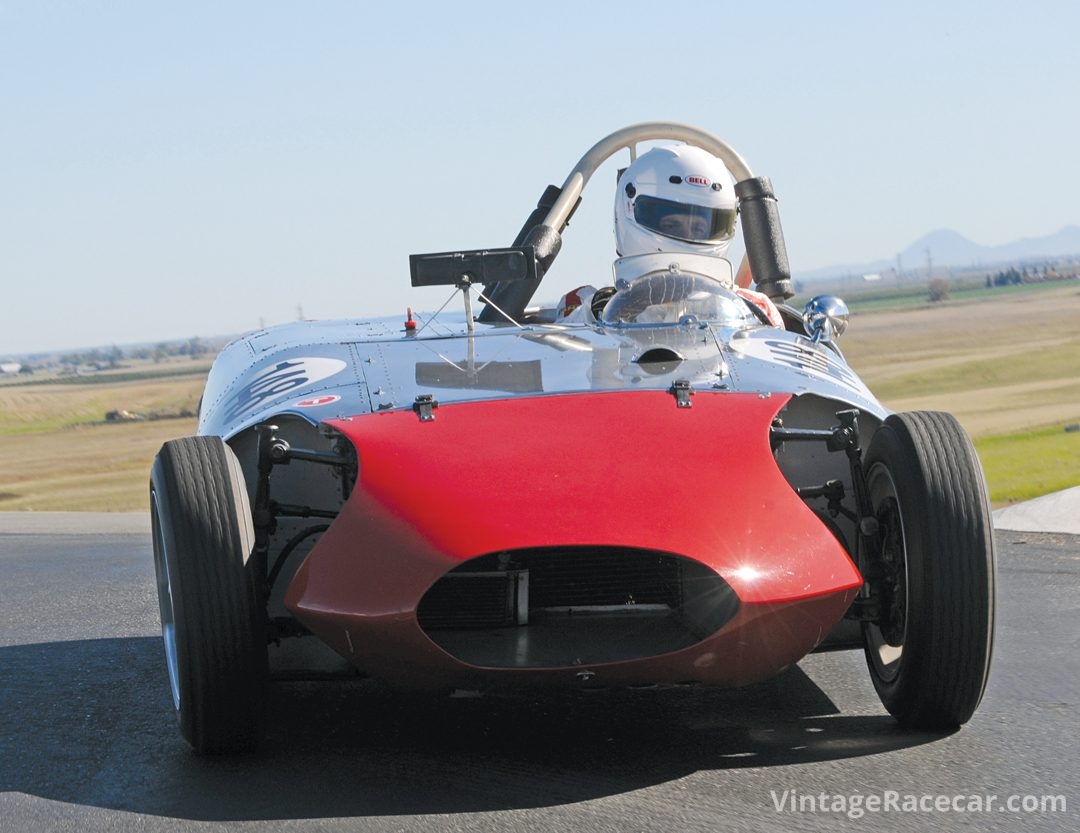
SPECIFICATIONS
Chassis: mild-steel, tubeframe
Body: Aluminum (now with fiberglass nose) Wheelbase 88”
Track: Front: 54.25”, Rear: 54.5” Weight 1,200-lb
Suspension: Morris Minor
Engine: 1958-1965: 918-cc Morris Minor, with Alta OHV head. 1965-present: 948-cc, 4-cylinder, BMC A-Series
Carburetion: Single Weber DCOE, sidedraft Transmission Morris Minor 4-speed
Brakes: 10” drum (all corners) from MGA
RESOURCES
The author would like to thank the trust and generosity of Steve Kupferman and CSRG for making this test drive possible. Additionally, he would like to thank Alan Slater, Michael Rosen, Gary Magwood, Mike Nilson, and John Wright with their assistance in unraveling the nearly forgotten history of both the V.A.Y. and the Canada Class. Also, special thanks go to OMP and Bell Helmets for supplying the safety equipment used in conducting this track test.
• Manufacture of Fine Cars for Racing in “Canada Class” Part of Program of Scuderia, The Ontario Intelligencer
– Jan 9, 1959
• Canada Track & Traffic – September 1959
• Canada Class Sports Cars Illustrated – June 1957
• The St. Lawrence Axle-Commentator – Vol. 1, No. 4 • Canada Class Race Cars
– www.mcubed.ca/Canada%20Class/index.html


